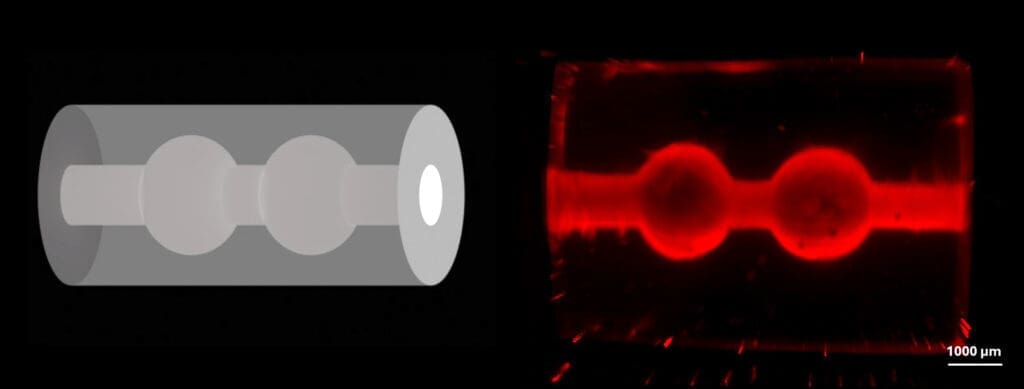Bioprinting: ETH Zurich develops 3D breast tissue model for research into breast milk production
Researchers at ETH Zurich have developed a groundbreaking model of milk-forming breast tissue that provides new insights into the processes of breast milk formation. Led by Prof. Marcy Zenobi-Wong, an expert in tissue engineering and biofabrication, the researchers used 3D printing technology and cells from human breast milk to create a functional tissue model that produces milk components such as öý-casein and milk fat globules. The study, published in the journal “Science Advances”, marks an important advance in lactation research and could also have long-term applications in drug research or breast cancer studies.

The model is based on an innovative technique called volumetric bioprinting, in which a liquid is hardened by targeted laser irradiation to form structures that resemble the milk ducts and alveoli of the human breast in a matter of seconds. The material used, obtained from the udder tissue of cows, contains similar components to human breast tissue and forms the basis for the artificial cavities. Milk epithelial cells isolated directly from breast milk were inserted into these structures. These cells, including lactocytes, which are responsible for milk production, naturally form components of breast milk during lactation and were able to form a dense layer of cells on the inner walls of the artificial milk ducts in the model.
The researchers found that the cells in the model are functional and produce essential milk components. This is an important step, as the complex processes of milk production are poorly understood despite their importance for the nutrition of newborns. Breast milk contains hundreds of components, including proteins, fats, complex sugars, immune cells and microorganisms, which are precisely tailored to the needs of infants. The new model makes it possible for the first time to study milk-forming cells under controlled laboratory conditions, which facilitates targeted experiments on the functioning of lactation and external influences such as drugs or chemicals.
Although the model does not yet produce complete breast milk, it offers a valuable tool for research. It could help to address breastfeeding challenges that many women experience and provide answers to questions that have so far remained unanswered. In addition, the model opens up perspectives for further applications, such as investigating the effects of medication on milk production or developing models for breast cancer research. The researchers plan to further increase milk production in the model by optimizing the 3D printing technology to improve functionality.
The study also emphasizes the need for more scientific research into aspects of female biology. Processes such as lactation, endometriosis and fertility problems have long been neglected, even though they are relevant to the health of millions of women. One advantage of the new model is its ethical and low-threshold production: instead of invasive methods or animal testing, it uses cells that are naturally present in breast milk. This facilitates research and could increase the visibility of women-specific health issues.
The work of ETH Zurich shows how innovative technologies such as volumetric 3D printing can revolutionize biomedical research. The combination of biofabrication and natural cell sources creates a model that not only advances basic research, but also enables practical applications in medicine. The researchers emphasize that further studies are needed to realize the full potential of the model, but the current results lay a solid foundation for future developments in lactation and health research.
Original Paper:
Read also:
POCT biomarker: 1-dollar test predicts breastfeeding complications – MedLabPortal
Editorial office: X-Press Journalistenbû¥ro GbR
Gender note. The personal designations used in this text always refer equally to female, male and diverse persons. Double/triple references and gendered designations are avoided for the sake of better readability ected.




